Preserving the integrity of vinyl on plastic surfaces is essential for maintaining the longevity and aesthetic appeal of various items, from decals on household items to car interiors.
The challenge of preventing vinyl from peeling off plastic requires a combination of proper application techniques and protective measures. In this guide, we’ll explore effective methods on how to keep vinyl from peeling off plastic, offering practical tips for preparation, application, and post-installation care.

Whether you’re a DIY enthusiast or a business owner looking to enhance the durability of vinyl applications, these insights will help you achieve a long-lasting and professional finish while preventing the frustrating issue of peeling vinyl. Let’s delve into the key strategies that will keep your vinyl securely adhered to plastic, preserving the quality and appearance of your projects.
Importance of Addressing the Issue
Addressing the issue of vinyl peeling off plastic is crucial not only for the aesthetic value of the items but also for their overall longevity. Peeling vinyl can significantly detract from the appearance of the item, making it look worn and poorly maintained. Furthermore, once the peeling begins, it can rapidly worsen if not dealt with promptly, leading to complete detachment and requiring a complete redo of the application process.
This not only becomes a hassle but can also incur additional costs in materials and time. For businesses, the quality of their vinyl applications directly reflects on their brand image; a peeling vinyl sign or decal can convey a lack of attention to detail and professionalism. Thus, ensuring that vinyl adheres properly from the start can save both time and money in the long term, while also maintaining the integrity and reputation of one’s work or business.
Understanding Vinyl and Plastic Surfaces
Before proceeding with the application of vinyl to plastic surfaces, it’s important to understand the characteristics of both materials. Vinyl is a versatile and flexible material that can adhere to various surfaces when properly applied. However, its adhesive qualities can be affected by factors such as surface texture, cleanliness, and the presence of chemicals or residues.
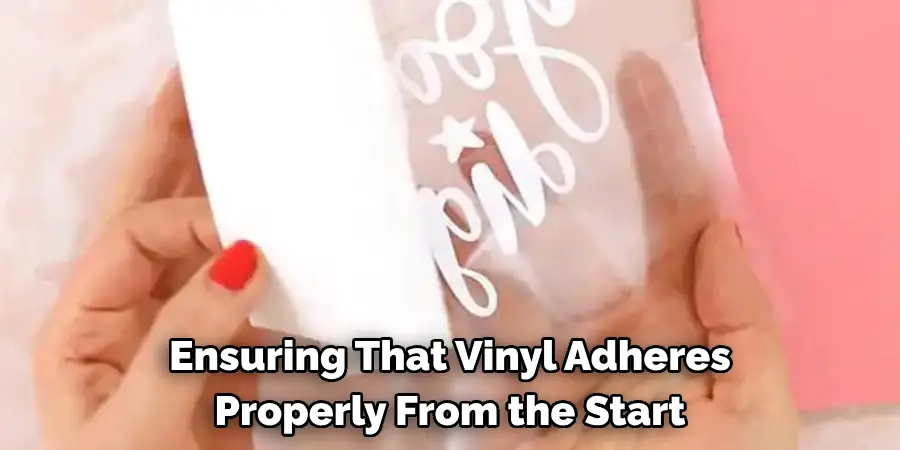
On the other hand, plastic surfaces vary widely in texture, chemical composition, and porosity, all of which can influence the adhesion of vinyl. Some plastics are smooth and non-porous, offering a straightforward application process, while others have textures or coatings that may require special preparation or adhesives.
Additionally, certain types of plastic may emit chemicals over time that can weaken vinyl adhesive. Recognizing these properties and how they interact is the first step in ensuring a successful and durable vinyl application.
Properties of Vinyl and Plastic
Understanding the inherent properties of vinyl and plastic is fundamental to achieving successful and long-lasting adhesion. Vinyl, known for its durability and flexibility, is composed of polyvinyl chloride (PVC), making it resistant to moisture and capable of withstanding various environmental conditions without deteriorating.
Its flexibility allows it to conform to curves and irregular surfaces, making it an ideal choice for a wide range of applications. The adhesive on the back of vinyl is designed to be permanent, but its effectiveness can be compromised by improper surface preparation or incompatible surface materials.
On the other hand, plastics come in a wide variety, each with its unique molecular composition and surface characteristics. Some common plastics, such as polyethylene (PE) and polypropylene (PP), have low surface energy, making it difficult for adhesives to bond with them. Others, like PVC, have higher surface energy and are more conducive to adhesive bonding. Additionally, the chemical stability of plastic plays a role in how it interacts with vinyl over time, with some plastics potentially releasing oils or chemicals that could weaken the vinyl’s adhesive.
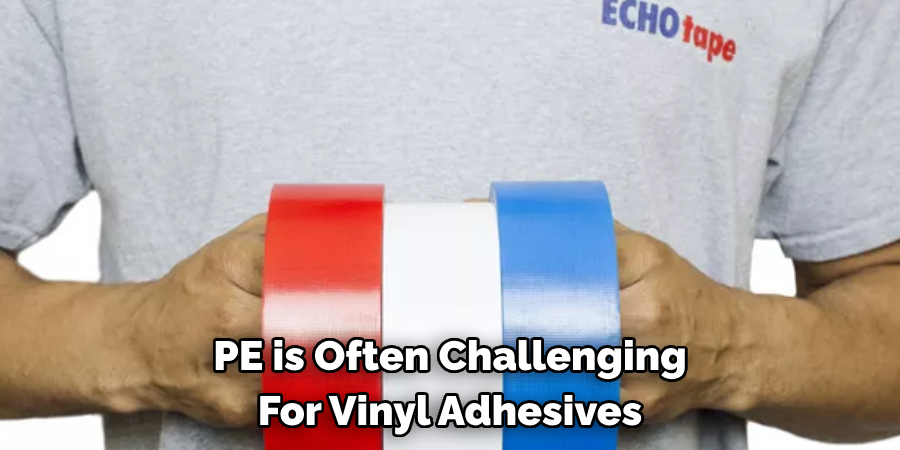
Recognizing these properties and tailoring the application process to accommodate them are essential steps in ensuring a secure and lasting bond between vinyl and plastic surfaces.
Factors Contributing to Vinyl Peeling off Plastic
Several factors can contribute to the peeling of vinyl from plastic surfaces, undermining the durability and appearance of the application. Understanding these factors is crucial in preventing peeling and ensuring a long-lasting bond:
- Improper Surface Preparation: The leading cause of vinyl peeling is often inadequate surface preparation. Dirt, grease, and other residues on the plastic surface can impede the adhesive’s ability to form a strong bond. Surfaces must be thoroughly cleaned and dried before vinyl application.
- Environmental Conditions: Extreme temperatures, humidity, and exposure to sunlight can significantly affect the adhesive’s performance. Vinyl applied in very hot or cold conditions may not adhere properly, and continuous exposure to UV light can degrade the adhesive over time.
- Chemical Interactions: Certain plastics may release chemicals or oils that can weaken the vinyl adhesive. This is particularly common with plasticizers found in flexible plastics, which can migrate to the surface and reduce the vinyl’s adhesive strength.
- Surface Texture and Energy: The surface texture and energy of the plastic can also impact adhesion. Low surface energy plastics, such as polyethylene and polypropylene, provide fewer sites for the adhesive to bond, leading to weaker adhesion. Highly textured surfaces may also prevent the vinyl from making full contact with the plastic.
- Quality of Vinyl and Adhesive: The quality of the vinyl and its adhesive can play a significant role. Low-quality materials may not perform well under certain conditions or over time, leading to premature peeling.
- Improper Application Technique: Finally, how the vinyl is applied can influence its longevity. Air bubbles, incomplete surface contact, and stretching the vinyl too much during application can all lead to areas where peeling can initiate.
Addressing these factors before and during the application can significantly reduce the risk of vinyl peeling off plastic, ensuring a more durable and visually appealing result.
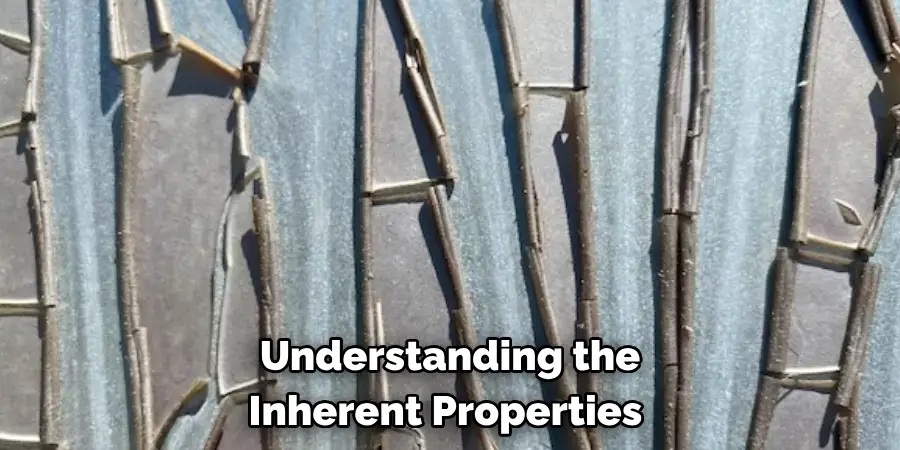
The Importance of Surface Texture and Porosity
Surface texture and porosity are critical aspects that significantly impact the adhesion of vinyl to plastic surfaces. These characteristics influence how well the adhesive on the vinyl can bond with the surface. A smoother surface typically provides a better bond, as the adhesive can make full contact without any gaps or air pockets that might lead to peeling.
Conversely, a highly textured or porous surface may present challenges for vinyl application, as these textures and pores can prevent the adhesive from making solid, uniform contact with the surface.
For optimal adhesion, the surface texture should be as uniform and smooth as possible. However, when dealing with inherently textured or porous plastics, using a primer designed to fill in these gaps can be beneficial.
A primer can create a smoother, more adhesive-friendly surface that allows the vinyl to bond more securely. Understanding the specific texture and porosity of the surface you’re working with is a vital step in preparing for successful vinyl application, helping to ensure longevity and durability of the vinyl once applied.
Common Types of Plastics and Their Compatibility with Vinyl
When considering vinyl applications, the type of plastic surface plays a pivotal role in determining the success and longevity of the adhesion. Here are some common types of plastics and insights into their compatibility with vinyl:
- Polyethylene (PE): Known for its low surface energy, PE is often challenging for vinyl adhesives to bond with. Special treatments or specific types of adhesives designed for low-energy surfaces are typically required for successful application.
- Polypropylene (PP): Similar to PE, PP also has low surface energy, making it difficult for standard adhesives to form a strong bond. Surface treatments, such as corona or flame treatment, can improve adhesion by increasing the surface energy.
- Polyvinyl Chloride (PVC): PVC is naturally more compatible with vinyl adhesives due to its higher surface energy. Being from the same family, PVC and vinyl generally bond well, making it a suitable choice for vinyl applications without extensive surface preparation.
- Polystyrene (PS): Polystyrene can vary in its compatibility with vinyl. While rigid forms of PS usually provide a good surface for adhesion, foam or expanded PS may require additional considerations due to its texture.
- Acrylonitrile Butadiene Styrene (ABS): ABS plastics combine the properties of PE, PP, and PS, offering a surface that generally bonds well with vinyl adhesives. Its high surface energy and rigidity make it an excellent candidate for vinyl applications.
- Polyethylene Terephthalate (PET): PET surfaces are compatible with vinyl adhesives, especially when properly prepared. However, the presence of any coatings or treatments on PET surfaces can affect adhesive performance.
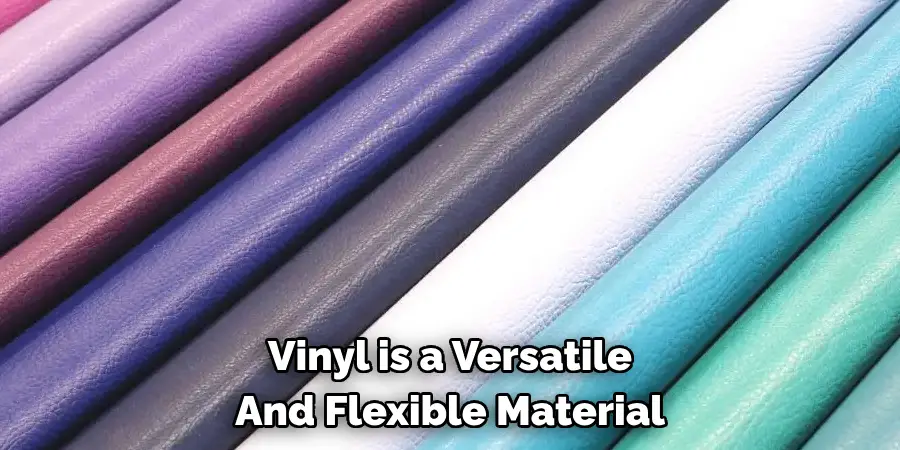
Each type of plastic has its inherent qualities that dictate how well it will bond with vinyl adhesives. By understanding the characteristics of these common plastics, one can better prepare for a successful vinyl application, maximizing durability and visual appeal.
10 Methods How to Keep Vinyl from Peeling off Plastic
1. Surface Preparation:
The foundation of a successful vinyl application is proper surface preparation. Clean the plastic surface thoroughly to remove any dust, grease, or contaminants that could hinder adhesion. Use a mild detergent or isopropyl alcohol and ensure the surface is completely dry before applying vinyl.
It is also recommended to use a lint-free cloth or paper towel for cleaning, as any remaining debris can cause imperfections in the vinyl. In addition, make sure that all edges and corners are clean and free of dust and debris.
Once the surface is clean, it is important to assess its condition. Check for any cracks, chips, or other damage that could affect the vinyl’s ability to adhere properly. If any damage is found, it should be repaired before proceeding with the application.
2. Heat Transfer Application:
Employing heat during the application process is a proven method to enhance vinyl adhesion. Use a heat gun or hairdryer to gently warm the plastic surface before applying the vinyl. The heat softens the vinyl, allowing it to conform to the plastic’s contours more effectively, resulting in improved adhesion. Additionally, heating the surface of the plastic will help to release any trapped air bubbles during the application process.
This heat transfer method is especially useful when applying vinyl to curved or uneven surfaces such as car bumpers or helmets. The heat allows the vinyl to stretch and adhere more easily, preventing wrinkles or creases in the final product. However, it’s essential to be cautious when using heat, as too much can cause the vinyl to become too pliable and difficult to work with.
3. Quality Vinyl Material:
Invest in high-quality vinyl material designed for the specific application and intended use. Quality vinyl is more likely to adhere well and resist peeling over time. Ensure that the vinyl is compatible with the type of plastic surface you are working with, as different plastics may require different adhesive properties. Additionally, choose a vinyl material that is durable and can withstand the elements if it will be used for outdoor purposes.
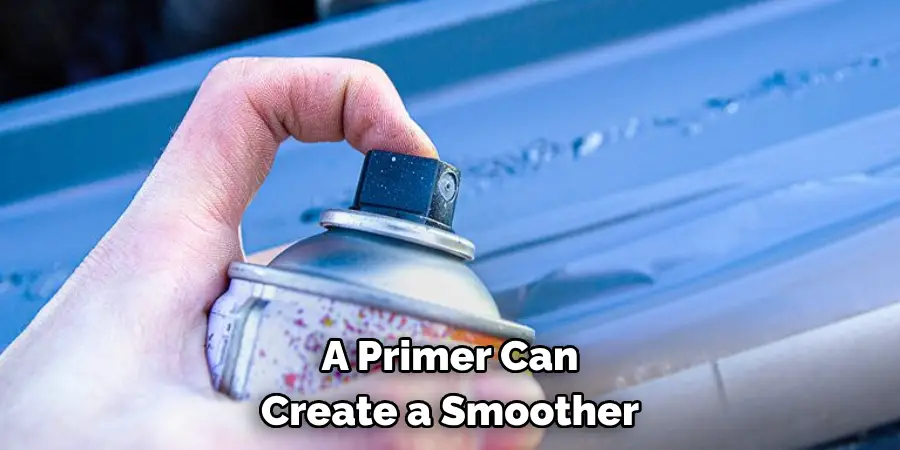
4. Proper Adhesive Selection:
Selecting the right adhesive for the vinyl and plastic combination is crucial. Different plastics may have varying levels of surface energy, affecting adhesion. Choose an adhesive specifically formulated for plastic surfaces, ensuring compatibility with both the vinyl and the plastic substrate. However, if your project involves bonding dissimilar materials such as vinyl and metal, a universal adhesive may be a better choice.
There are also factors to consider when selecting an adhesive, such as its strength, curing time, and flexibility. The strength of the bond required will determine the type of adhesive needed. For example, using a low-strength adhesive for high-stress applications can lead to failure and compromise the integrity of the bond.
5. Pressure Application:
Applying consistent pressure during the initial application helps the vinyl adhere securely to the plastic surface. Use a squeegee or similar tool to remove air bubbles and ensure full contact between the vinyl and plastic. Apply pressure evenly across the entire surface, paying extra attention to edges and corners. This will help prevent any lifting or peeling of the vinyl in the future.
It is important to note that applying too much pressure can also cause issues. Too much pressure can stretch or distort the vinyl, leading to uneven application and potential damage. It is recommended to start with light pressure and gradually increase as needed, rather than applying excessive force right away.
6. Edge Sealing with Adhesive Promoter:
Enhance the adhesion along the edges of the vinyl by applying an adhesive promoter. This product promotes bonding and can be particularly effective in preventing the edges from lifting or peeling. Carefully apply the adhesive promoter only to the edges of the vinyl, following the manufacturer’s recommendations. Ensure that the edges are completely dry before proceeding with the next step.
Adhesive promoter is a type of primer that helps to create a stronger bond between two surfaces. It is commonly used in automotive, construction, and industrial applications. When it comes to vinyl installation, using an adhesive promoter along the edges can greatly improve the overall adhesion of the vinyl.
7. Clear Sealant for Edges:
Seal the edges of the vinyl with a clear, flexible sealant. This additional layer provides protection against moisture and prevents the vinyl from lifting at the edges. Choose a sealant that is compatible with both the vinyl and plastic, ensuring a secure and long-lasting bond. Apply the sealant using a small brush or applicator, carefully following the manufacturer’s instructions.
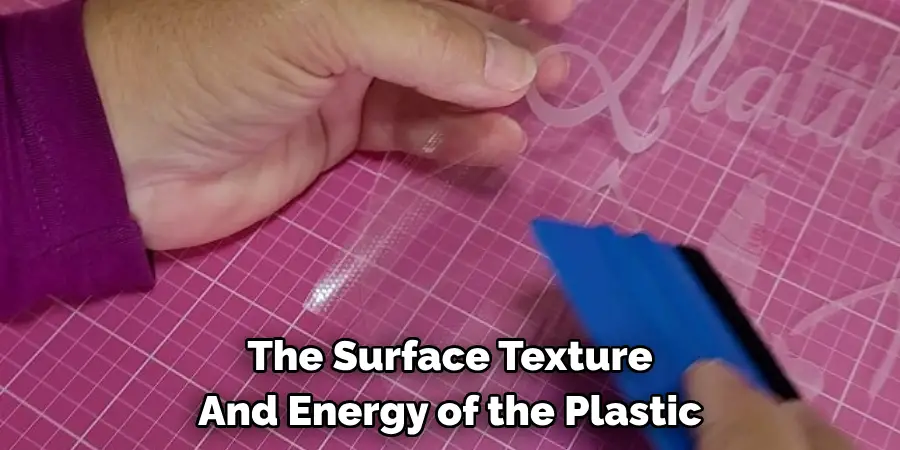
Once the sealant has dried completely, use a razor blade or sharp knife to trim any excess material from the edges. This will give your project a clean and professional finish. Be sure to dispose of any trimmed material properly, as it may still contain adhesive residue.
8. Protective Lamination:
Consider applying a protective laminate over the vinyl for an extra layer of defense. This transparent film adds durability, protects against UV rays, and helps prevent peeling. Ensure the laminate is suitable for outdoor or high-wear applications if needed for long-term durability.
Lamination is a process of covering a material with a thin layer of plastic or any other protective material, which helps to increase its strength and durability. It is commonly used in various industries for protecting materials such as paper, fabric, and even vinyl.
9. Regular Maintenance and Cleaning:
Preserve the integrity of the vinyl by adopting a routine maintenance and cleaning schedule. Gentle cleaning with a mild detergent and soft cloth can prevent the buildup of grime, which can contribute to peeling over time. Avoid harsh chemicals that may compromise the adhesive or the vinyl itself.
10. Avoid Extreme Conditions:
Protect vinyl applications from extreme conditions that could compromise adhesion. Avoid prolonged exposure to extreme heat, direct sunlight, or harsh weather conditions. If applicable, park vehicles with vinyl decals in shaded areas to minimize exposure to intense sunlight, which can contribute to vinyl deterioration and peeling.
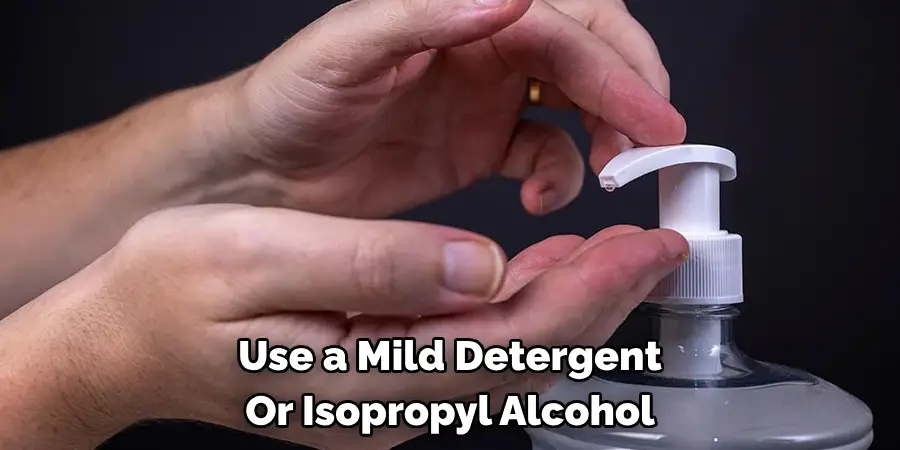
Conclusion
In conclusion, preventing vinyl from peeling off plastic surfaces requires attention to detail and adherence to proper techniques. By understanding the causes of peeling, such as inadequate surface preparation or low-quality materials, individuals can implement effective preventive measures. Thoroughly cleaning and drying the plastic surface, selecting high-quality vinyl and adhesive, and applying vinyl with even pressure are essential steps in ensuring strong adhesion. Additionally, the use of heat and sealants further enhances durability and longevity. Thanks for reading, and we hope this has given you some inspiration on how to keep vinyl from peeling off plastic!
About the Author
Adrien Rowe, an expert in knitting, fiber arts, and bookbinding, promotes sustainability and creativity through workshops and tutorials. Passionate about education and community, he inspires crafters of all levels to learn, share, and grow in a supportive, idea-driven environment.
Professional Focus
Specializes in advanced knitting techniques, fiber manipulation, and textile innovation.
Expert in book arts, including cotton papermaking, handmade paper techniques, and bookbinding.
Dedicated to educating and inspiring crafters of all skill levels through tutorials, workshops, and hands-on learning experiences.
Passionate about creating a supportive community where makers can share ideas, learn, and grow.
Education History
Rhode Island School of Design (RISD) – Bachelor of Fine Arts (BFA) in Textiles.
University of Iowa Center for the Book – Master of Fine Arts (MFA) in Book Arts.
Expertise:
Advanced knitting, fiber manipulation, papermaking, bookbinding, sustainability-focused crafting, educational workshops, creative tutorials, and fostering a supportive maker community.
